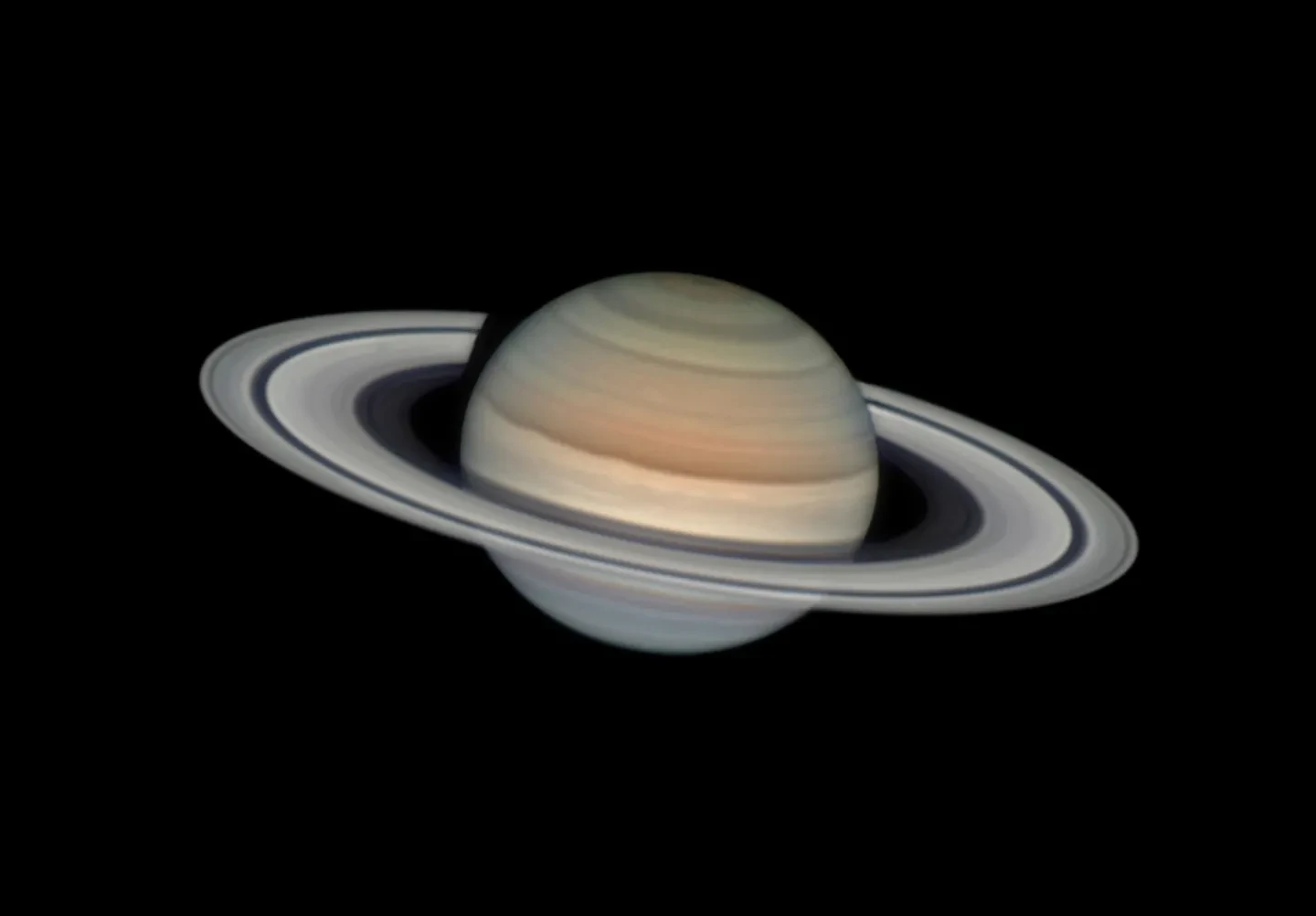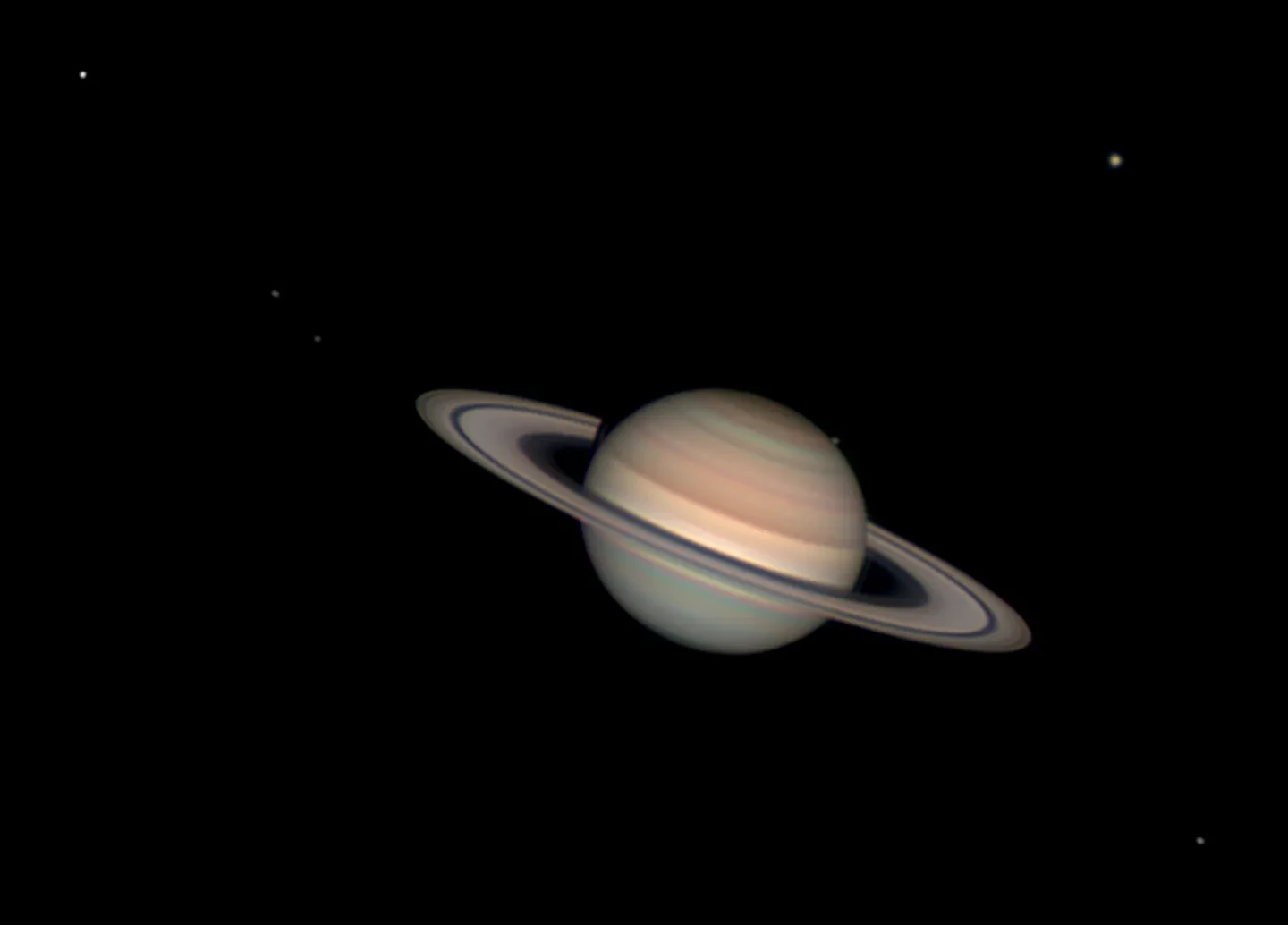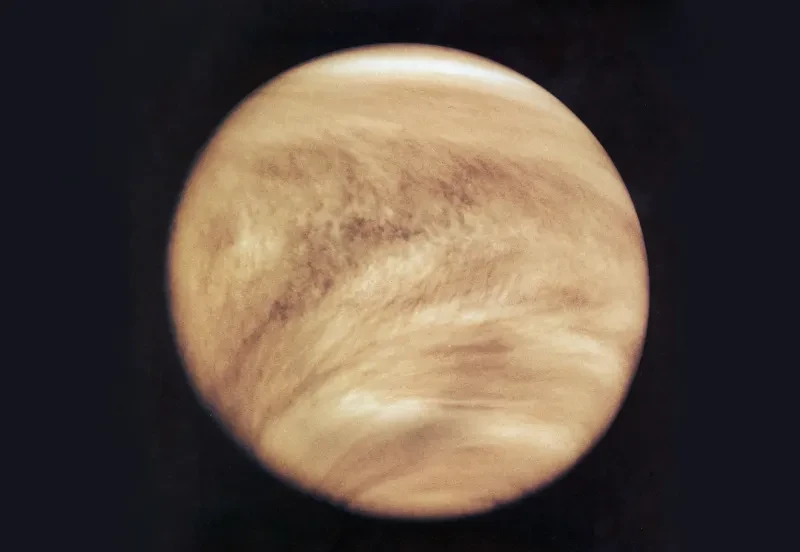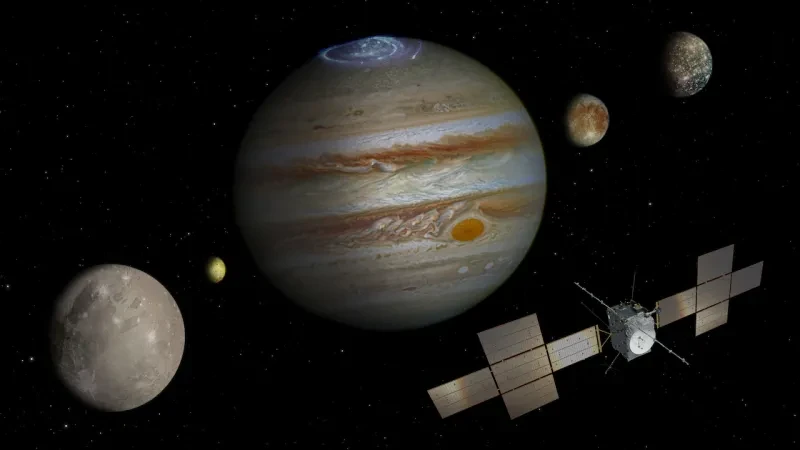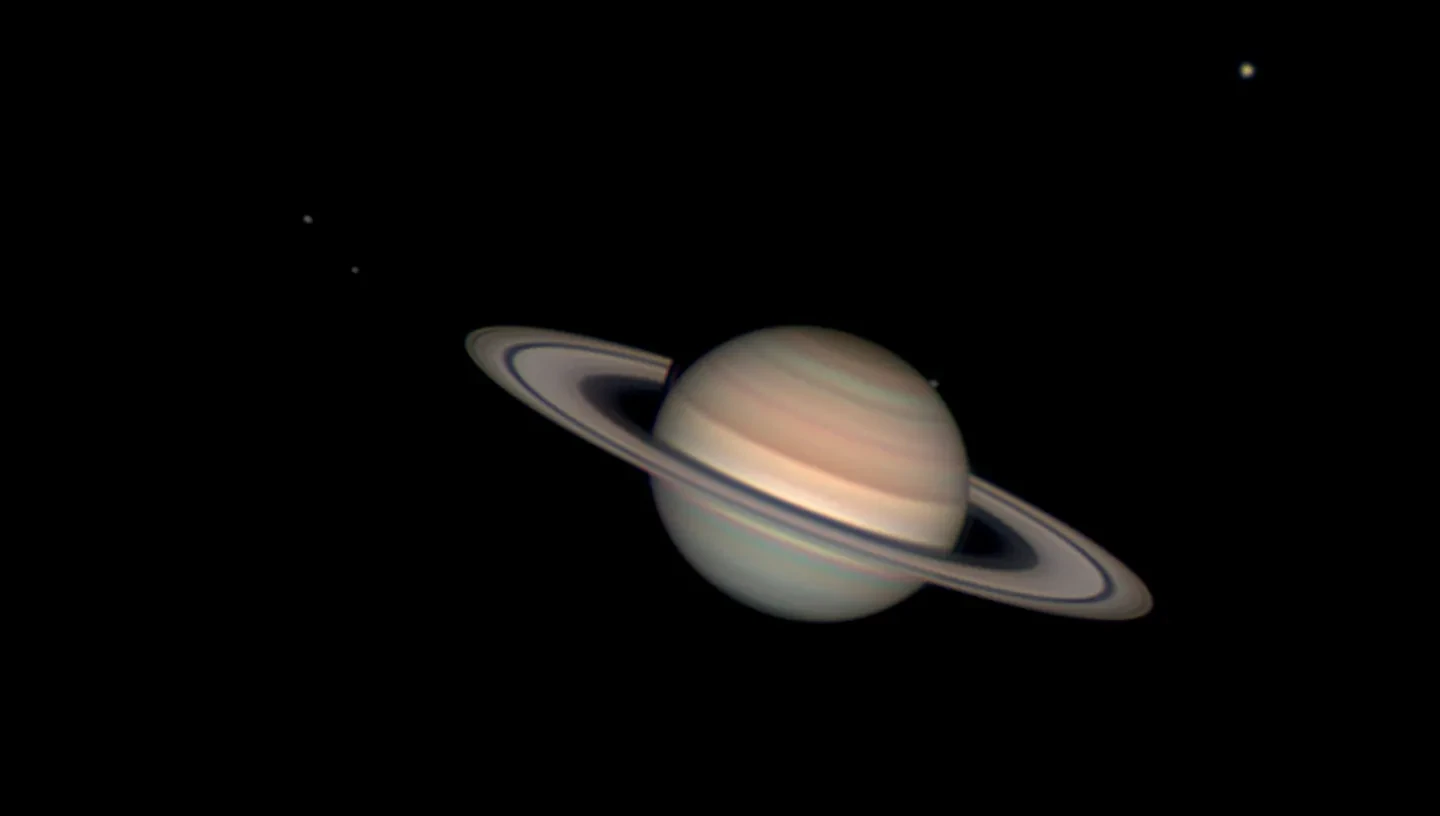
Gas giant Saturn is one of the most recognisable planets in the Solar System. With an extensive ring system more easily seen than those of any other planet, and a huge 274 moons circling it, Saturn has long captured the interest of scientists, astronomers and stargazers alike.
The second largest planet in the Solar System with a diameter of 116,000 km, Saturn is roughly ten times the diameter of Earth.
Saturn is the sixth planet from the Sun and orbits it at an average distance of 1.4 billion kilometres.
A day on Saturn lasts approximately 10.7 hours, due to its rapid rotation. However, thanks to its long orbit around the Sun, a year on Saturn lasts about 29.5 Earth years.
Saturn is also the least dense of all the planets, its mean density being 0.69 g per cubic centimeter, making it the only planet in our Solar System which is less dense than water.
Exploring Saturn
The exploration of Saturn by spacecraft has yielded groundbreaking discoveries. One of the most important missions was the Cassini-Huygens spacecraft, which arrived at Saturn in 2004 and spent 13 years meticulously studying the planet, its rings, and its diverse collection of moons.
Cassini's observations revealed intricate details of Saturn's atmospheric patterns, the complexity and dynamics of Saturn's iconic rings, and more.
The Huygens probe descended to the surface of Saturn's moon Titan, offering us a look into a world with lakes of liquid hydrocarbons, and a potential environment for life.
The planetary interior
Like the other gas giant Jupiter, Saturn is composed mainly of the light elements hydrogen and helium. We believe there is a core of rocky material about the size of the Earth at its centre. Around this is a metallic hydrogen shell some 30,000 km deep.
Above this is a region composed of liquid hydrogen and helium with a gaseous atmosphere some 1000 km deep. This is the part we see as the surface of the planet.
Saturn's atmosphere
Saturn is about 75% hydrogen and 25% helium. The clouds are composed of very small amounts of other chemical elements combined with hydrogen to give such compounds as ammonia, methane and phosphine.
Because Saturn is colder than Jupiter the more colourful chemicals occur lower in its atmosphere and are not seen; this results in much less dramatic markings but they are similar to those seen on Jupiter, taking the form of bands with some smallish spots.
Saturn's rings
Saturn's iconic rings are composed of countless particles ranging in size from tiny dust grains to larger boulders. These particles are predominantly made of ice, including water ice, but they also contain traces of rocky material. The exact origin of Saturn's rings is still a topic of scientific investigation, with theories suggesting they formed from the debris of a shattered moon or through the capture of passing objects.
The rings are divided up into several distinct rings with gaps between them. Astronomer Giovanni Cassini (who the space mission was named after) discovered the largest gap in 1675, but we now know that there is a very complex structure to the ring system.
The rings are actually quite thin compared to their expansive width; while the ring system extends up to 282,000km away from Saturn, the vertical height is only around 10 meters. Also, each ring goes around the planet at a different speed.
Galileo Galilei was the first to see Saturn’s rings in 1610, but he wasn't able to pinpoint what he was observing. It was in 1655 that Dutch mathematician and astronomer Christiaan Huygens identified them as a ring system.
For many years, Saturn was thought to be unique in having a ring system, but we know now that Jupiter, Neptune and Uranus all also have ring systems - although none are as prominent as Saturn's.
Seeing Saturn
Saturn can easily be seen with the naked eye. With good binoculars it can be seen to have a non-circular shape and the rings can be seen with a small telescope, which will also show the largest moon, Titan.
Saturn's moons
As of March 2025 Saturn has 274 identified moons, making it the planet with the most moons in our Solar System - in fact, it has almost double the number of moons than all the other planets combined.
The size of these natural satellites varies greatly, with its largest moon, Titan, bigger than the planet Mercury!
Some of Saturn's moons may even have the right conditions for life.
- Titan is by far the largest with a diameter of 5150 km and is the second largest satellite in the solar system. It is probably the only satellite with an atmosphere. Apart from the very low temperatures - 180 °C - conditions are similar to those found on the early Earth. It is also the only place other than Earth known to have liquids on its surface, featuring rivers, lakes and seas.
- Mimas has a diameter of 390 km. Its surface is very cratered and the Voyager pictures show one giant crater with a diameter almost equal to one third of that of the satellite.
- Enceladus has a diameter of 500 km. It shows cratering and also complex geological structures indicating large crustal movements.
- Tethys has a diameter of 1050 km. It appears to be made of ice and is heavily cratered. There is a huge trench-like structure extending a quarter of the way around the satellite, which is 100 km wide and 4 to 5 km deep.
- Dione is 1120 km in diameter. It shows many craters and large plains.
- Rhea has a diameter of 1530 km and is heavily cratered.
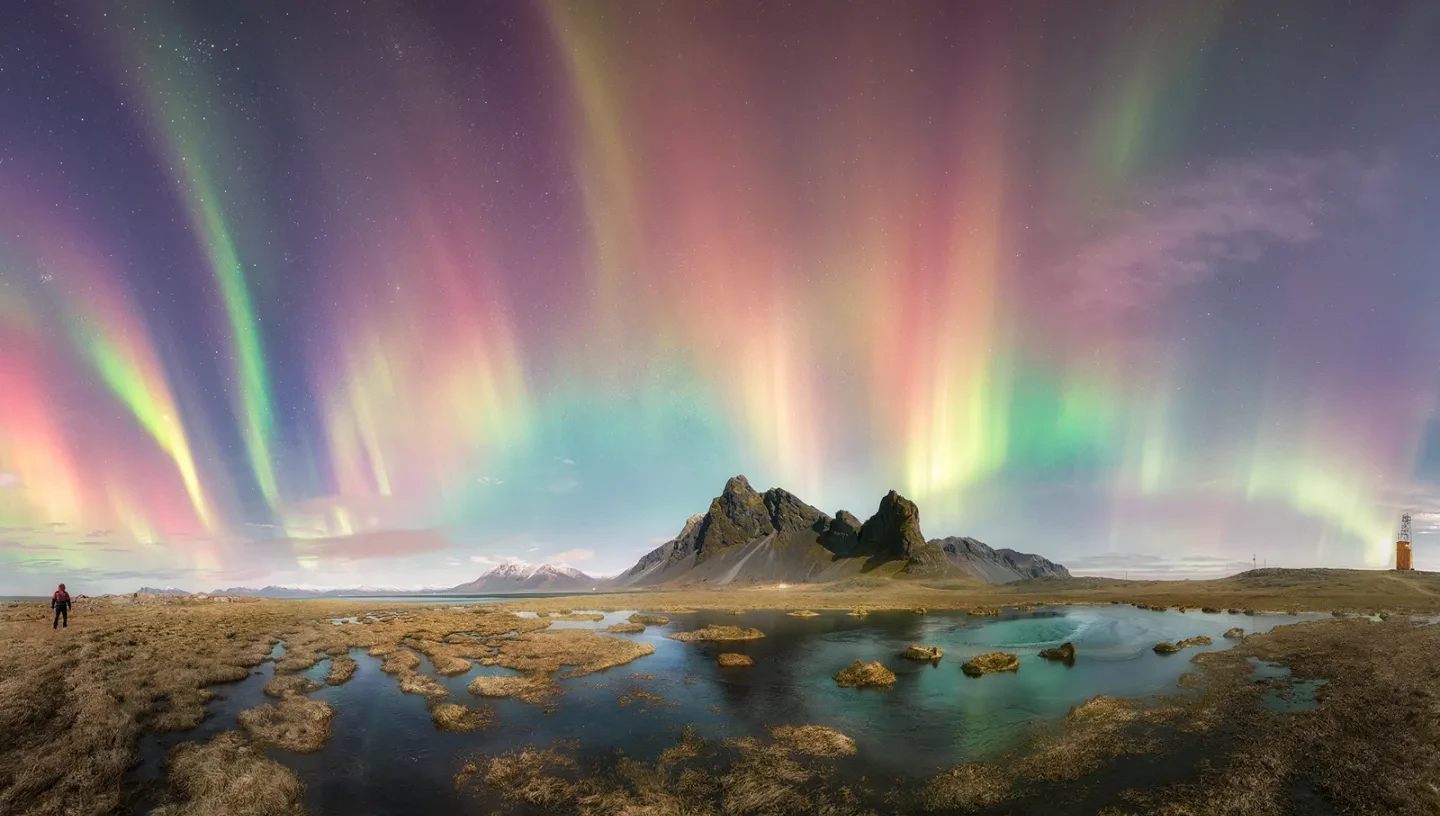
See the world's greatest space photography

Image: Saturn with Six Moons © Andy Casely - shortlisted in Astronomy Photographer of the Year 2024
